What are the five steps of a fire risk assessment?

You must conduct and periodically review a fire risk assessment of the property as the person in charge. This will show you how to put out a fire and protect people. If your company employs five or more people, you are required to maintain a written record of your fire risk assessment.
What are the five steps of a fire risk assessment?
There are five fire risk assessment key stages. The responsible person must make sure they consult the comprehensive fire risk assessment guidelines provided in the site-specific guides created by the Department for Communities and Local Government. The five-step fire risk assessment consists of the following:
- Determine the fire hazards.
- Determine the people at risk.
- Analyze, eliminate, or reduce the risks.
- Record your findings, create an emergency plan, and impart training.
- Regularly review and update the fire risk assessment.
Step 1 – Determine the potential fire threats on your property
You must determine the following:
- sources of ignition, such as open flames, heaters, or some commercial processes;
- sources of fuel, such as waste items, display materials, textiles, or overstocked items;
- And sources of oxygen, such as air conditioners, medical oxygen supplies, or oxygen supplies used in industry or commerce.
Additionally, take into account structural elements like ducts and flues, holes carved into firewalls without stops, sizable concentrations of combustible materials, open roof spaces, excessively long escape routes, etc.
Step 2 – Determine who is in danger.
You must determine who may be particularly at risk, such as:
- anyone who may be sleeping on the premises;
- those present in vast numbers there;
- those with limited vision, hearing, mobility, or any other impairment;
- those who are unfamiliar with the layout;
- those exposed to a particular fire risk;
- those who work near fire hazards;
- those who labor alone or in remote locations (such as storage areas or roof spaces);
- young children or new parents with babies;
- those who are elderly or ill;
- those who have slow reaction times;
- external workers, agency personnel, and temporary employees.
Step 3 – Assess current fire safety measures to determine whether they are enough or need improvement.
The procedure is as follows:
(1) Estimate the likelihood that a fire will occur.
Consider the preventive fire practices that were seen during this risk assessment.
(2) Identify possible outcomes in the event of a fire.
Considering the structure’s use, the people within, the fire safety measures in place at the time of this risk assessment, as well as other factors.
Step 4 – Summarize the results, create an emergency plan, and educate, inform, and train.
You must document, prepare, educate, inform, and train in this process. Both the people at risk identified in step 2 and the fire dangers identified in step 1 must be noted. Additionally, you must document the action you took in step 3.
Step 5 – Make plans to review the evaluation regularly.
Make that the fire-risk assessment is current and accurate. If you feel your fire-risk assessment is no longer accurate, such as after a near-miss or every time there is a major change to the degree of danger in your facilities; you should review it.
Help with the assessment.
Using common fire safety risk assessment manuals, you can do the fire risk assessment yourself.
You must designate a “competent person” to assist you if you lack the knowledge or time to do the fire risk assessment yourself, such as a trained risk assessor.
If you have any doubts about the accuracy of your fire risk assessment, you should consult your local fire and rescue authorities. However, they are unable to perform risk analyses on your behalf. Therefore, you should hire a professional to do the job.



